A strong customer feedback system can be your growth engine. Companies that set up structured ways to collect, analyze, and act on customer feedback outperform those flying blind. Done right, a feedback system improves the customer experience, strengthens customer loyalty, and turns insights into action.
Let's break down how to create a customer feedback approach that grows with your business.
What is a customer feedback system?
A customer feedback system is a structured setup designed to collect customer feedback across the entire journey, from first touch to long-term loyalty. It transforms raw opinions into actionable insights that guide product development, optimize support, and sharpen marketing strategies.
The best customer feedback systems combine qualitative and quantitative input, including:
- In-product surveys
- Email-based customer feedback surveys (NPS, CSAT, CES)
- Online reviews and app store ratings
- Customer support team transcripts
- Usability tests and interviews
- Passive feedback collection tools like widgets or feedback buttons
A centralized feedback system ensures that all customer insights become part of a single source of truth, fueling smarter strategies and faster action across teams.
Why investing in a customer feedback system pays off fast
You can't fix what you can't see. An effective customer feedback system is a non-negotiable if you're serious about:
- Boosting customer satisfaction by resolving friction points quickly
- Spotting lifecycle improvement areas before they turn into major churn risks
- Strengthening customer relationships through targeted engagement
- Tracking feedback trends to measure long-term impact
- Driving data-backed decisions across product, support, and marketing
It’s not just about collecting feedback. It’s about managing customer feedback and closing the loop with real action.
Customer feedback systems vs. standalone surveys
Feedback surveys are a tactic. A customer feedback system is a strategy.
Standalone surveys capture isolated moments. But if you want scalable, valuable insights, you need a full-stack customer feedback strategy that:
- Collects across multiple channels (web, mobile, email, chat)
- Improves survey response rates with smart targeting
- Analyzes patterns with customer feedback analysis
- Flags negative feedback early for fast support
- Funnels positive feedback into testimonials and referrals
This kind of always-on engine turns customer feedback into a core part of your operations.
What every effective customer feedback system needs
1. Gathering customer feedback in multiple channels
Meet customers where they are: web, app, email, chat. The more context, the better.
"We try to maximize the reach and at the same time maximize the response rate, and to do that, we use almost all available channels. We use emails, push notifications, and something that works best for us, the in-product messages for our Web application or mobile in apps within our mobile app. We don't send letters yet with NPS, but maybe we'll even get there one day."
Krzysztof Szymański, (former) Head of CRM at Taxfix
2. Smart survey design to fight low response rates
Start with pre-built survey templates, then tailor them to fit specific scenarios like onboarding, post-support, or feature launches. Keep things short and contextual.
"Survicate allows us to get feedback on the particular experience of the site or the app as the user is experiencing it, which makes the answers much more contextual and accurate."
Sandrine Veillet, VP of Global Product at Medscape
3. Advanced targeting to personalize feedback requests
Deliver customer feedback surveys based on behavior, user role, account type, or journey stage to make sure customers feel like you understand them. No one likes a random pop-up.
“If you think about the type of content, the type of updates, the type of messages different customer groups would require, it's very different. For example, if I know that you've been filing a few days before the deadline for the last three years, the likelihood of my changing this behavior and forcing you to file in January is rather low.”
Krzysztof Szymańśki, (former) Head of CRM at Taxfix
4. Insightful segmentation
Split responses by segment, cohort, or timeframe to extract valuable insights from your customer feedback initiatives.
"As soon as we get responses, we can filter and see what the NPS is in Venezuela, Cuba, or Mexico and get a clear overview of each diaspora."
Aura Arias, Head of CRM at MAJORITY
5. Real-time customer feedback analysis and reporting
Use a customer insights tool to turn feedback data into prioritized themes, customer sentiment breakdowns, and next-step actions.
“We got 2,000+ responses in a day and a half. Survicate’s AI let us quickly cluster those comments into clear themes, helping us to quickly shape the product experience we aimed to release.”
Bruna Maia, Director of User Experience at Wellhub
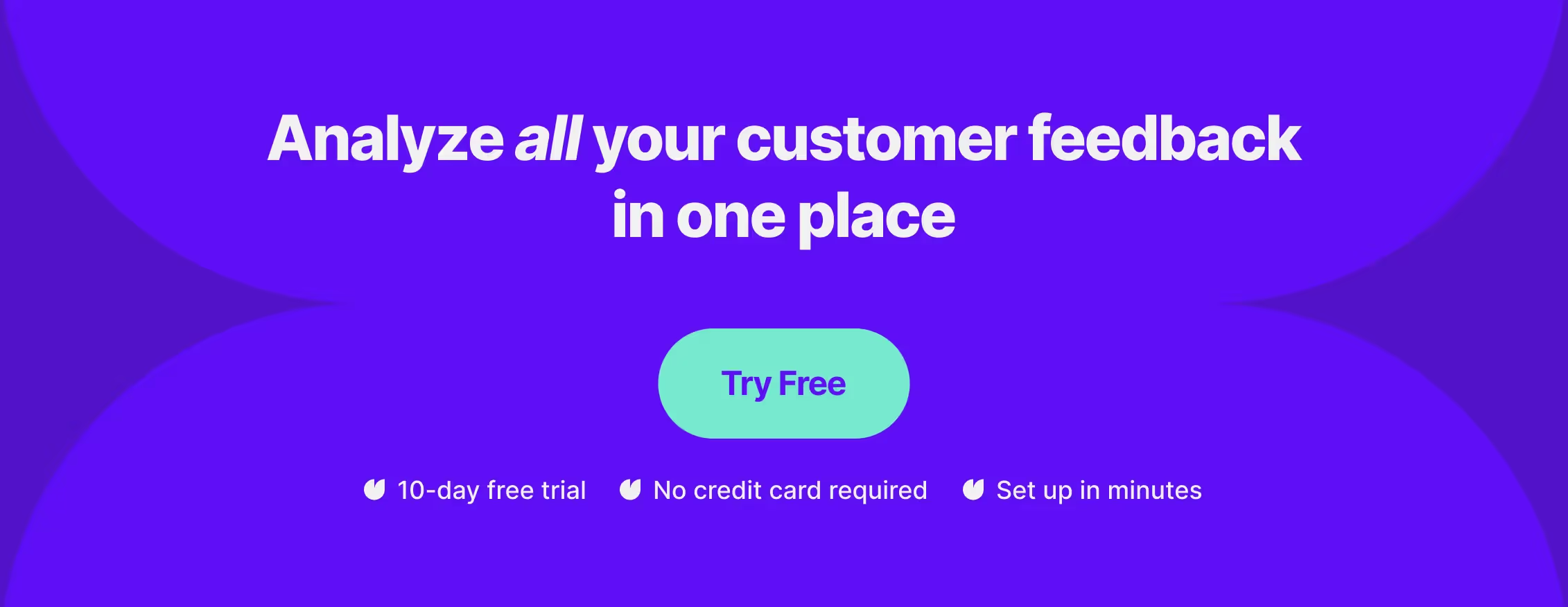
6. Seamless integrations
Your customer feedback software should play nicely with CRM tools, help desks, analytics platforms, and more. Automate follow-ups, profile tagging, and team notifications.
“The ability to trigger automated workflows based on survey responses has been critical to improving our retention efforts. With Survicate feeding data into Braze and Intercom, we can act on feedback instantly, whether it’s driving referrals or proactively supporting users at risk of churning."
Aura Arias, Head of CRM at MAJORITY

7. Close the feedback loop
Resolving issues is one thing, but you shouldn't forget about closing the customer feedback loop. Show customers you’re listening by acting on input quickly. Respond to negative feedback from unhappy customers, thank happy customers, and announce updates fueled by their input.
"With Survicate, we don’t just collect data on why users leave. We take action to bring them back. Whether it’s through support outreach or service improvements, churn surveys have become a key part of our retention strategy."
Aura Arias, Head of CRM at MAJORITY
Key metrics every customer feedback system should track
Net Promoter Score (NPS)
NPS measures one deceptively simple thing: how likely your customers are to recommend you on a scale from 0 to 10. It splits people into Promoters (9–10), Passives (7–8), and Detractors (0–6), giving you one loyalty number to track over time.
Why should you care? Because NPS is a crystal ball for spotting churn risks and future advocates.
Smart companies use NPS follow-ups to turn detractors into save stories, and promoters into five-star reviews and referrals.
You can run NPS on a regular schedule or trigger it after key moments like onboarding or feature launches.
How Survicate customers are winning with NPS:
- Pranamat triggers NPS 15 days post-delivery via ActiveCampaign. Promoters join their affiliate army; detractors get fast-tracked to support for rescue ops.
- MAJORITY blends NPS scores with open-text feedback for deeper insight, fueling personalized retention campaigns through Braze and Intercom.
- Taxfix times NPS perfectly: once after users file, and again after their refund hits. They use those insights to segment and personalize journeys—boosting retention when it matters most.
- Hitta.se measures long-term loyalty across segments, then adjusts strategies by user group. Their reward? A 35% jump in NPS. 🎯
Customer Satisfaction Score (CSAT)
CSAT is your go-to when you want the quick pulse: “How satisfied were you with [insert experience here]?” Usually rated 1–5 or 1–10, it captures immediate customer sentiment after a key interaction.
Unlike NPS (which looks at long-term customer loyalty), CSAT zooms in on right now.
It’s perfect for spotting trouble after purchases, deliveries, or customer service interactions before they become bigger issues.
Real-world CSAT wins with Survicate:
- ParkBee fires off CSAT surveys after every parking session. They uncovered confusion around parking instructions, tweaked signage and app flows, and dropped their support contact rate by 20%.
Customer Effort Score (CES)
CES cuts straight to the point: “How easy was it to get this done?”
It's rated on a simple 1–5 scale, and it's pure gold if you're in SaaS, ecommerce, or any product where friction kills conversion. The lower the effort, the happier (and stickier) your customers are.
Use CES surveys right after critical tasks like onboarding, feature activation, or support chats.
If scores are high (read: users struggled), it's your cue to fix UX gaps, rethink onboarding, or automate away the pain.
How brands use CES in real life:
- Wellhub bakes CES surveys into every new feature launch to check intuitiveness. If users struggle, they tweak fast. They also monitor CES scores across key workflows to catch friction early before it hurts customer retention.
Selecting the right customer feedback tools
Choosing the right platform is critical. Your system is only as good as the software you stack it with. Look for customer feedback tools that:
- Are built for fast setup (no-code or low-code)
- Offer ready-to-launch templates for key touchpoints
- Analyze qualitative customer feedback at scale with AI
- Centralize all customer feedback in one place
💡 Platforms like Survicate check all these boxes. Survicate is a flexible customer feedback platform that supports in-app, mobile, and email surveys, along with powerful feedback analytics via Dashboards and qualitative feedback analysis via Insights Hub and Research Assistant.
Create customer feedback system and build momentum
Creating an effective customer feedback system doesn’t require a complex rollout or a dedicated research team. In fact, the most impactful strategies usually start small, with one focused feedback loop. Once you’ve got that in place, scaling across your customer journey becomes much easier.
Here’s the basic flow every customer feedback system should follow:
- Collect feedback at relevant moments
- Analyze the data for patterns and themes
- Act on insights to improve the experience and close the loop
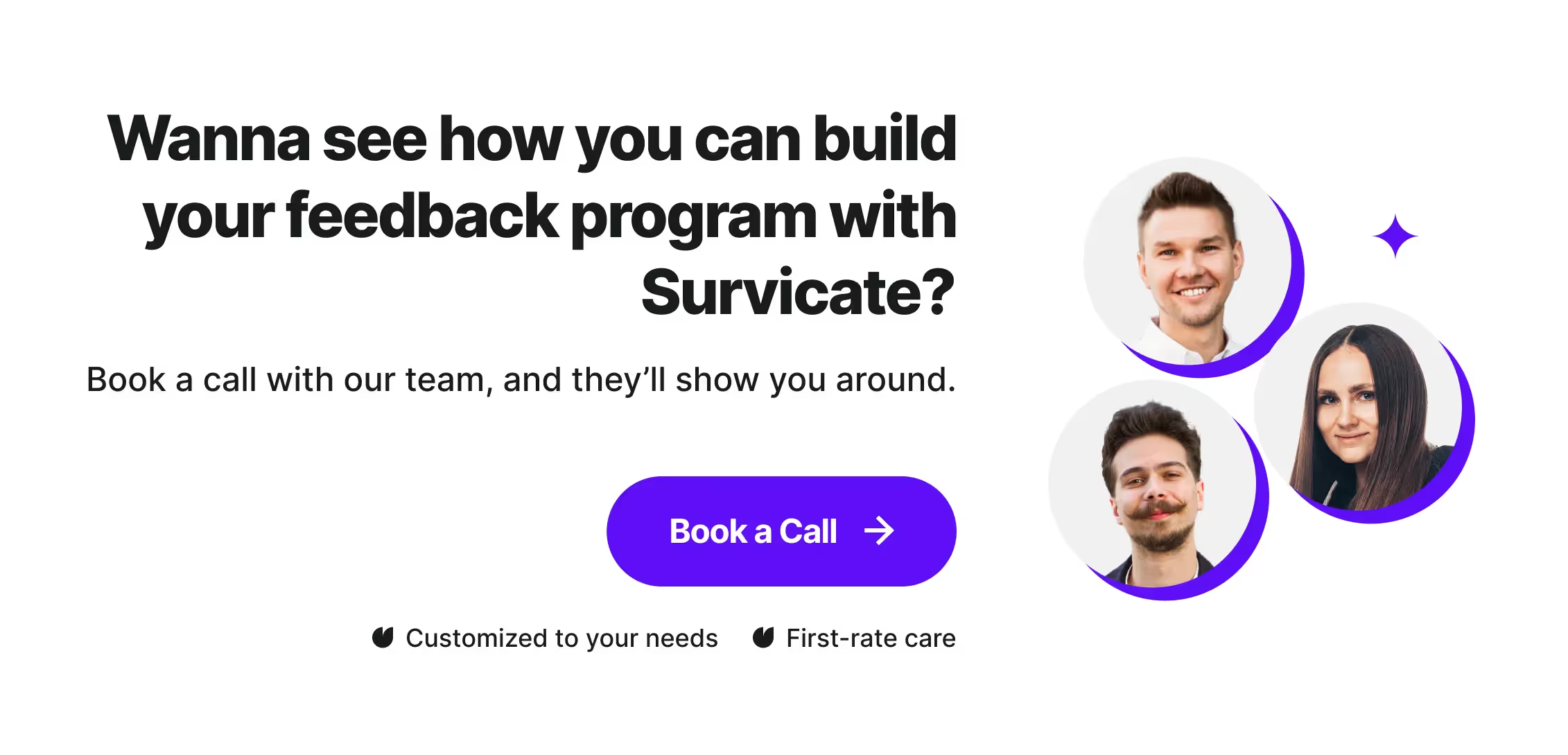
Start with a single customer feedback loop
The most common place to begin? A Net Promoter Score (NPS) survey. It’s simple, familiar to customers, and delivers a high signal. Ask: "How likely are you to recommend our product?", then follow up based on the response:
- Promoters can be routed to leave online reviews or refer others
- Passives might need a little nudge to deepen engagement
- Detractors should be prioritized for personal outreach or support
Layer in additional touchpoints
Once you're confident with one customer feedback loop, expand your system by adding new feedback sources:
- Post-interaction CSAT: Measure customer satisfaction immediately after a support chat or call
- Post-purchase CSAT: Learn how the buying experience felt while it's still fresh
- Passive feedback collection: Add a feedback button widget to your website or product to catch spontaneous input
- Product feedback: Trigger contextual in-app surveys after users engage with specific features
- Online review management: Encourage happy users to leave reviews and intercept unhappy customers before they go public
Centralize and analyze
Bring all this input into your feedback platform or customer feedback management system to ensure no signal gets lost. Use tools like user feedback analytics to tag and categorize responses, track customer sentiments, and uncover patterns across the customer lifecycle.
Analyzing feedback has never been easier with AI features, so there's no excuse for not doing it!
➡️ Check our AI customer feedback analytics article to see how effortless it is.
Act and communicate a.k.a. close the feedback loop
Feedback that’s acted on builds customer loyalty.
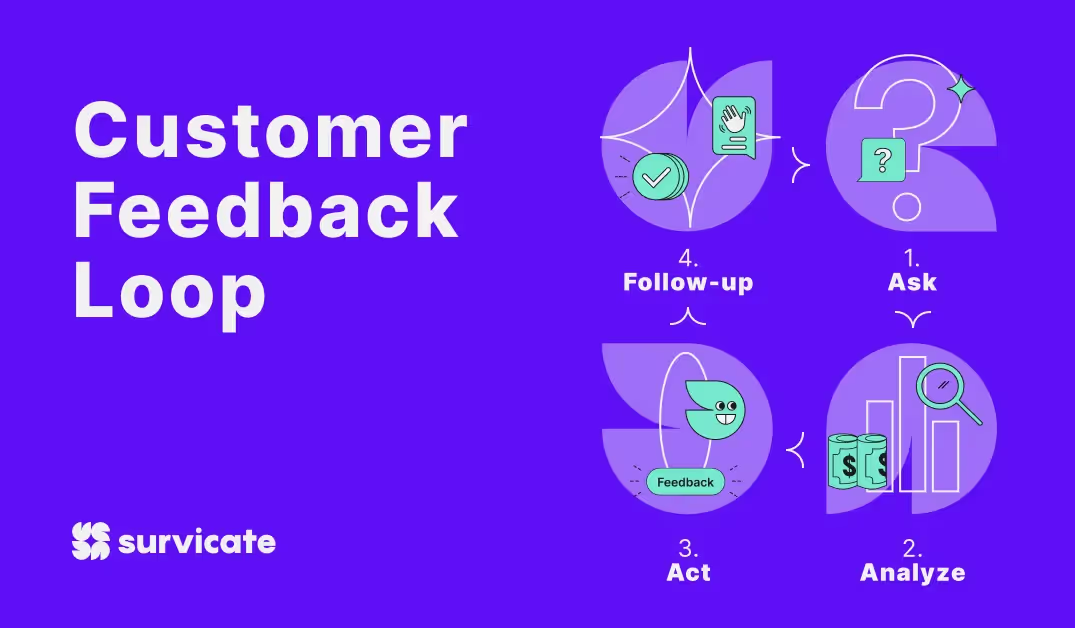
When you ship improvements based on feedback, shout it out. Highlight changelogs. Respond to reviews. Make your customers part of your story. When they see you closing the feedback loop, they will more likely stay, engage, and share.
That’s how you turn scattered responses into a real, ongoing customer feedback strategy.
Ready to build your customer feedback system?
You’ve got the blueprint, now it's time to bring it to life.
The companies winning today aren’t the ones guessing what their customers want. They’re the ones listening, measuring, and acting over and over again.
A well-structured customer feedback system keeps you close to your clients, uncovers what truly resonates, catches silent churn before it happens, and nurtures the people who will champion your brand.
It gives you a living, breathing roadmap for growth, one that adapts with every conversation, insight, and signal you collect.
Whether you're launching your first feedback loop out the door or scaling a full-on customer feedback engine, Survicate makes it easy to start fast and grow smart.
Start collecting feedback with a free trial or book a personalized demo to build a customer feedback system that actually drives change, not just reports on it.
FAQs about customer feedback systems
What is a customer feedback system?
A customer feedback system is a structured setup that collects, organizes, and analyzes feedback across every customer journey stage.
It helps businesses turn raw input into actionable insights to improve products, customer service, and marketing strategies. A strong customer feedback system includes multiple channels, such as in-app surveys, emails, chat feedback, and online reviews.
Why is a customer feedback system important?
Without a customer feedback system, you’re operating on guesswork. A good system helps you spot friction points early, boost customer satisfaction, reduce churn, and drive loyalty.
It centralizes feedback data so teams can make smarter, data-driven decisions and continually improve the customer experience.
How do you build an effective customer feedback system?
Building an effective customer feedback system starts with capturing feedback across multiple channels, designing thoughtful surveys, segmenting feedback by customer type, and analyzing results in real time.
Most importantly, you need to close the loop and show customers their voices are heard by taking action based on their input.
What are examples of customer feedback tools for building a system?
Popular tools for building a customer feedback system include platforms like Survicate, which allows businesses to collect customer feedback via web, mobile, and email surveys, analyze insights with AI, and integrate seamlessly with CRMs and help desk software.
Look for tools that offer multichannel support, real-time analysis, and easy setup.
How does a customer feedback system improve customer retention?
A customer feedback system improves retention by identifying problems early, before they drive customers away. By resolving negative experiences quickly and celebrating positive feedback, you build trust and deepen loyalty. Over time, this creates a more satisfied and engaged customer base.
What metrics should a customer feedback system track?
Every customer feedback system should track key metrics like:
- Net Promoter Score (NPS) – to measure loyalty and advocacy
- Customer Satisfaction Score (CSAT) – to assess satisfaction after specific interactions
- Customer Effort Score (CES) – to evaluate ease of use and reduce friction in key workflows
Tracking these KPIs helps you continuously optimize the customer experience.
How often should you collect customer feedback?
The best customer feedback systems collect feedback continuously, not just once a year. Set up ongoing surveys triggered by key events (like purchases, support interactions, or feature use) and combine them with regular NPS check-ins. Passive feedback tools, like website widgets, can also capture spontaneous insights anytime.
How do you close the loop in a customer feedback system?
Closing the feedback loop means acting on feedback quickly and visibly. Thank customers for their input, fix the issues they highlight, and announce improvements when they’re shipped. Proactively following up, especially with unhappy customers, shows that you value their voice and are committed to creating a better experience.








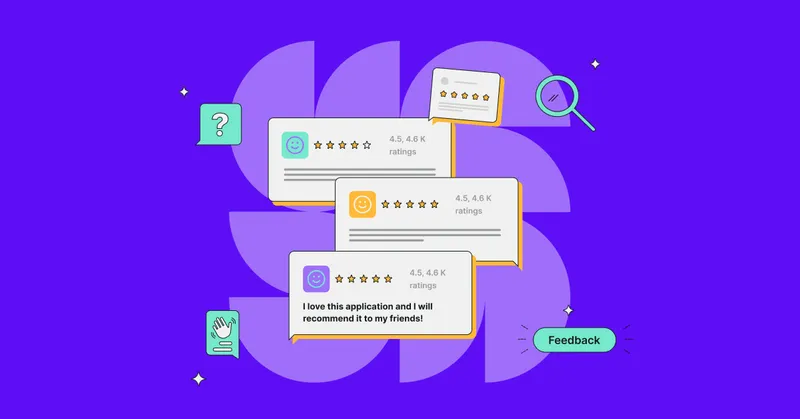
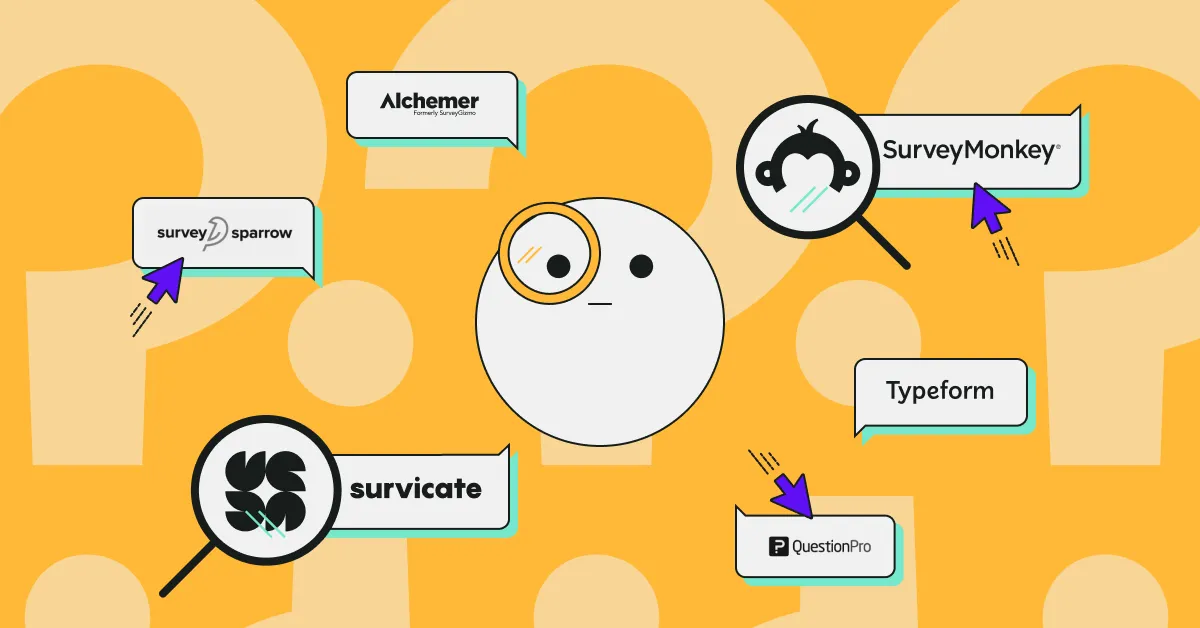
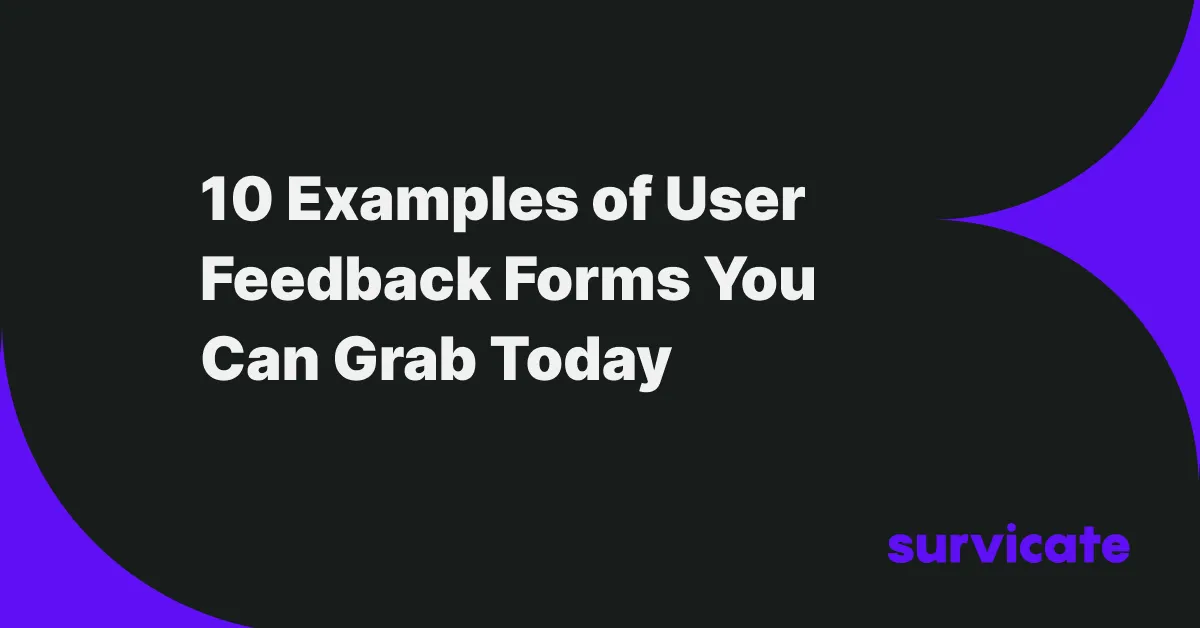
.png)
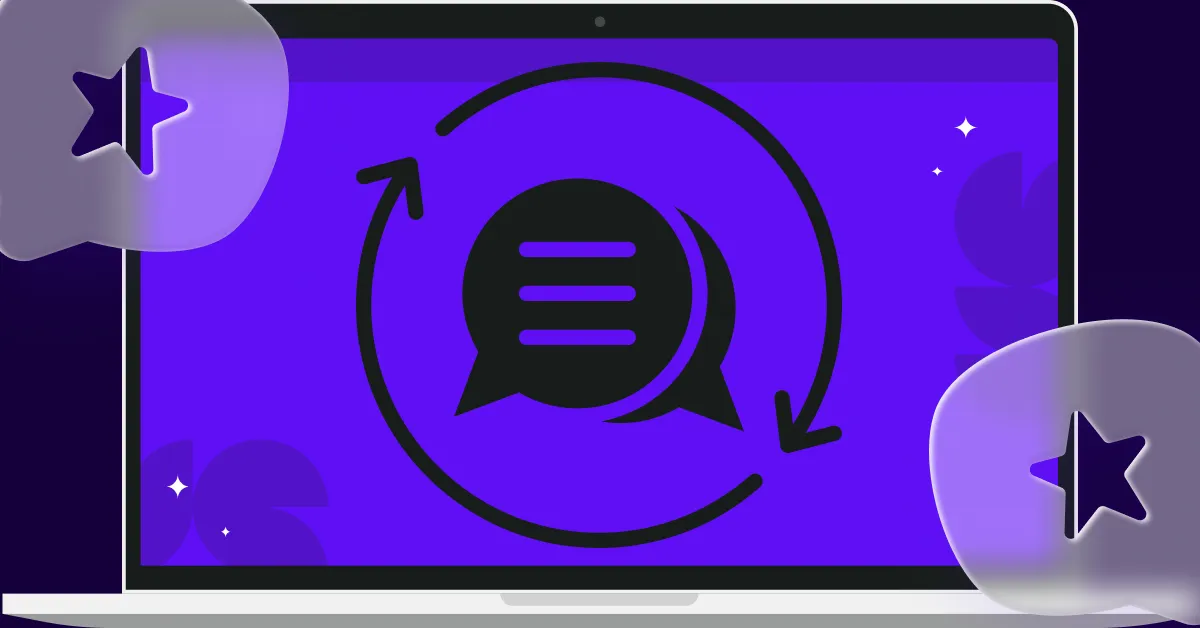
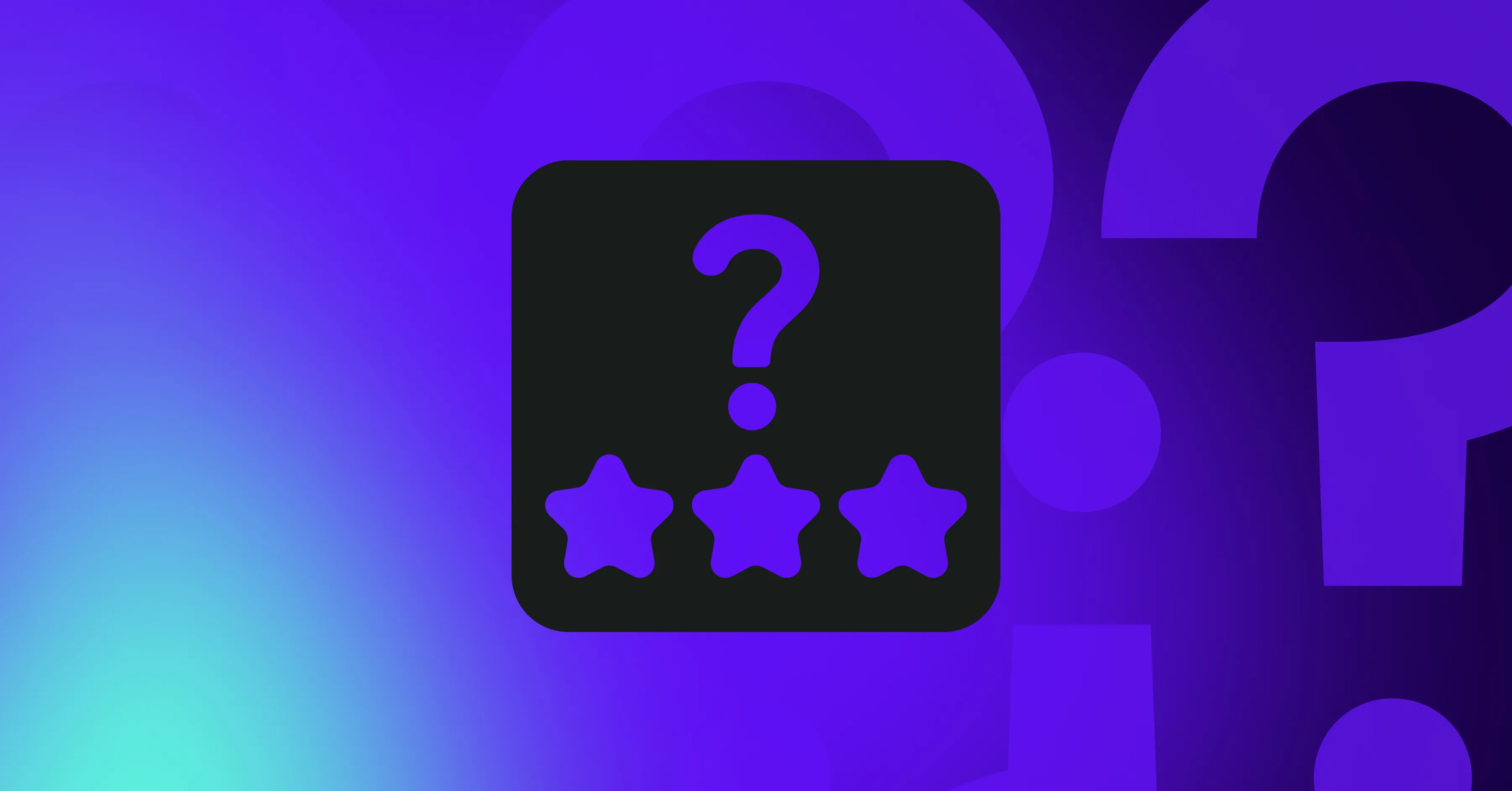

.svg)

.svg)



